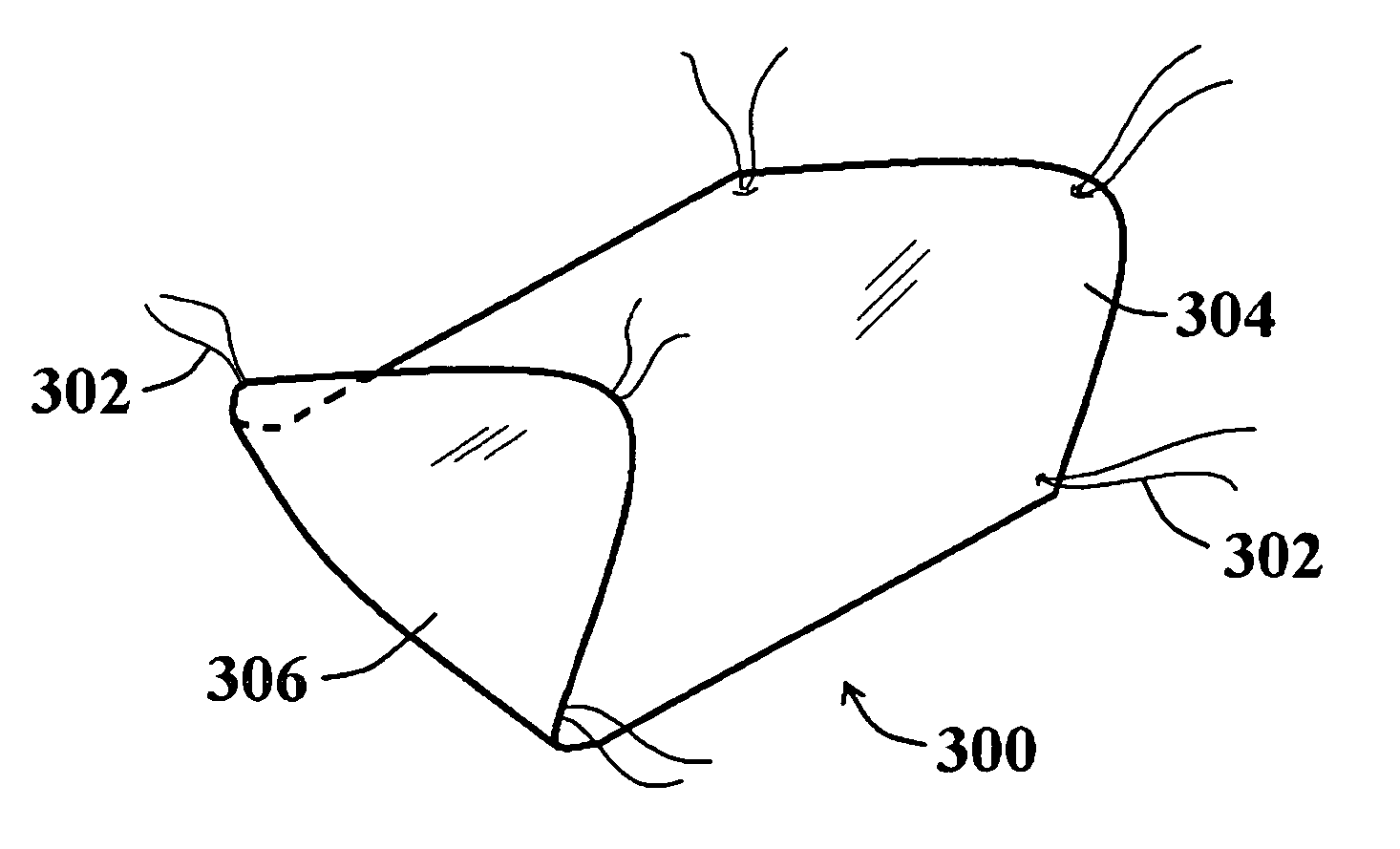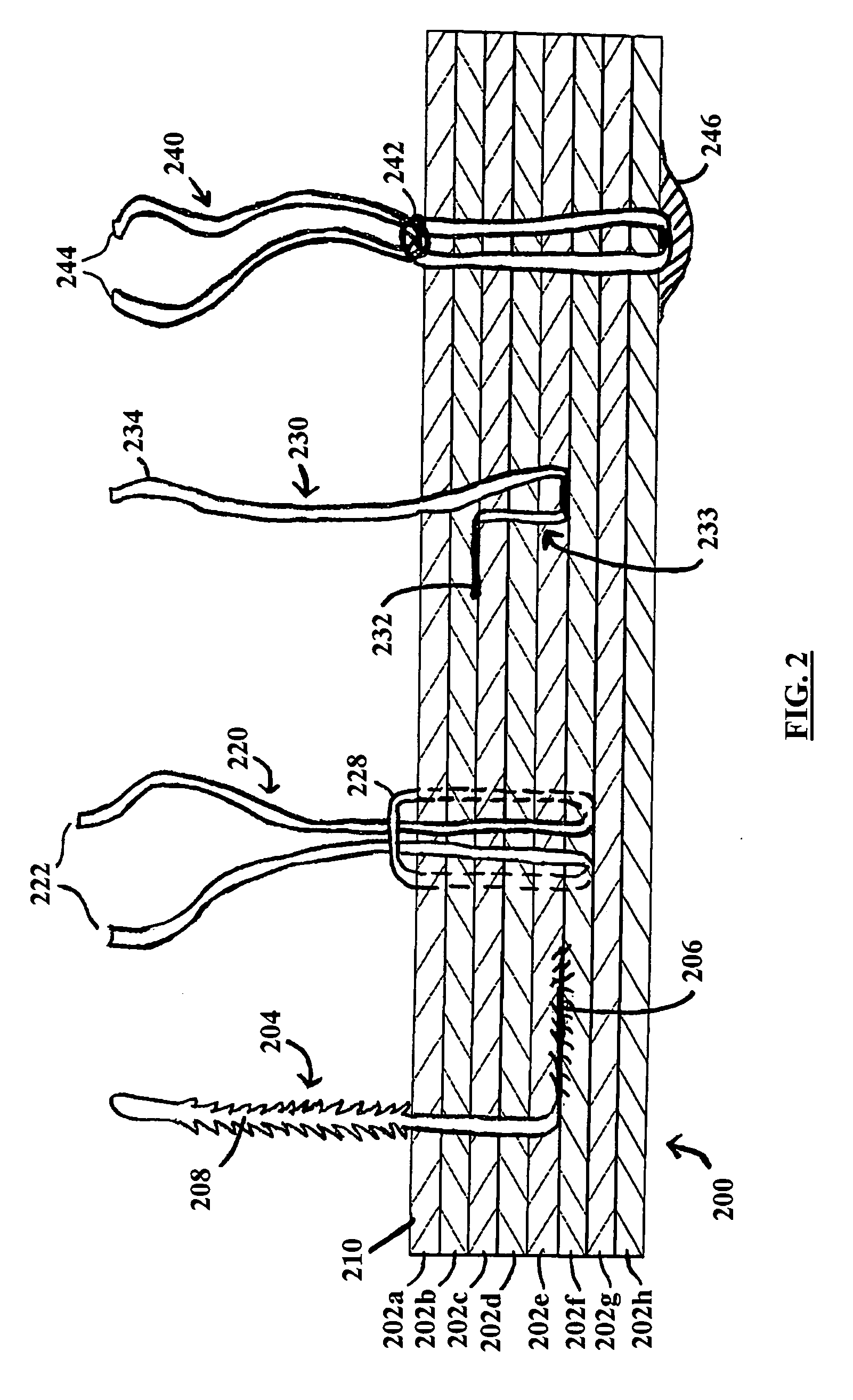Medical device with affixation means
a technology of affixed means and medical devices, applied in the field of medical devices, can solve the problems of imposing extra burden on the surgeon effecting the hernia repair, requiring extra tools, and being difficult to place, etc., and achieve the effect of convenient and fast placemen
- Summary
- Abstract
- Description
- Claims
- Application Information
AI Technical Summary
Benefits of technology
Problems solved by technology
Method used
Image
Examples
embodiment 200
[0025] One example of a medical device is illustrated in FIG. 2, which is a longitudinal cross-sectional view (not to scale) of a multilayered medical device embodiment 200 having affixation means embodied as sutures disposed therein. Different types of sutures are shown as well as different examples of how sutures may be attached to the device. While all of the illustrated sutures and attachment configurations could be included in a single device, presently preferred embodiments use a single suture type and mounting configuration.
[0026] The medical device 200 preferably includes at least two layers, more preferably at least about five, and yet more preferably at least about eight layers of a biocompatible material 202a-202h. Alternative preferred medical devices can have fewer or additional layers of said biocompatible material. For example, the alternative devices can have 2, 3, 4, 5, 6, 7, 9, 10, 11, 12,13,14,15,16,17, 18, 19, 20, or more layers of biocompatible material. Most pr...
embodiment 300
[0036]FIG. 3 illustrates a perspective view of a non-equilateral hexagon-shaped tissue repair device embodiment 300 showing one pre-placed suture 302 configuration. The suture placement configuration includes a suture 302 pre-placed near each of the six rounded apices of the device 300. Those of skill in the art will appreciate that a variety of shapes for the device 300 as well as a variety of pre-placed suture configurations will be appropriate for different applications (e.g., repair of different hernia types, treatment / repair of other wound / lesion types), and are within the scope of the present invention. It should be noted from FIG. 3 that the sutures 302 extending from the top side 304 of the tissue repair device 300 are not exposed on the bottom side 306.
[0037] In preferred embodiments, a biocompatible material comprising the device of the present invention also includes glycosaminoglycans, glycoproteins, proteoglycans, and / or one or more growth factors or therapeutic factors...
PUM
 Login to View More
Login to View More Abstract
Description
Claims
Application Information
 Login to View More
Login to View More - R&D
- Intellectual Property
- Life Sciences
- Materials
- Tech Scout
- Unparalleled Data Quality
- Higher Quality Content
- 60% Fewer Hallucinations
Browse by: Latest US Patents, China's latest patents, Technical Efficacy Thesaurus, Application Domain, Technology Topic, Popular Technical Reports.
© 2025 PatSnap. All rights reserved.Legal|Privacy policy|Modern Slavery Act Transparency Statement|Sitemap|About US| Contact US: help@patsnap.com



